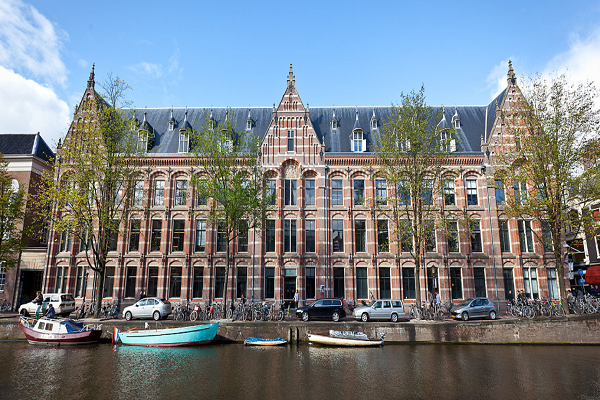University of Amsterdam: Winds and geography shape zigzag migration of Eleonora’s falcons between Canary Islands and Madagascar
To reach their winter homes in Madagascar from their breeding grounds in the Canary Islands – and vice versa – Eleonora’s falcons don’t take the shortest route, instead they zigzag across the width of Africa. This is what researchers from Spain’s Doñana Biological Station (EBD-CSIC) and the University of Amsterdam discovered in a new study, published on 13 July in the open access journal ‘Movement Ecology’. The researchers combined data from GPS trackers with global weather models and satellite imagery to discover how Africa’s seasonal wind fields and diverse landscapes shape this remarkable migration.
In a direct flight – along the shortest possible route – between the Canary Islands and Madagascar, the falcons would have to cover some 8,000 km. In the new study, the researchers show that the falcons fly much longer routes, averaging more than 9,000 km in the autumn and more than 11,000 km in the spring. In addition, they spend six days more on stopovers in the spring than in the autumn. ‘It is striking that the number of flight hours travelled in spring and autumn are the same, even though the spring routes are considerably longer. There was a simple explanation for this when we linked it to wind data: the birds benefit from a stronger tailwind in the spring,’ says lead author Wouter Vansteelant, postdoc at the EBD-CSIC and visiting researcher at the UvA’s Institute for Biodiversity and Ecosystem Dynamics (IBED).
Well-known strategy
To see how much the zigzagging behaviour helped the falcons maximise tailwinds across different landscapes, Vansteelant and his colleagues compared the birds’ tailwinds at various points along the route of their chosen migratory path with the tailwinds they could have received on the shortest possible route. Vansteelant: ‘It turned out that the falcons zigzagged in both spring and autumn to get as much tailwind as possible – or as little headwind as possible – during the terrifying crossings of the Sahara Desert and the Indian Ocean. That’s a common and well-known strategy among migratory birds.’ The researchers also saw that the falcons made direct eastward or westward flights over the Sahel-Sudan zone in both seasons, giving them less tailwind than they could have found on a shorter route. However, the wind is relatively weak in this region, and these east or west detours allowed the falcons to drastically reduce the flight distance over the tropical rainforest of the Congo Basin in the autumn and over the Sahara in the spring.
Flexible birds
‘Birds migrate via detours more frequently than they fly direct routes,’ explains Vansteelant. ‘It is likely that many more species of migratory birds respond to wind conditions in a similarly flexible way. When faced with strong headwinds, birds are better off drifting away from the shortest route until they can get back on track through weaker or more supportive wind fields. When the wind is weak or favourable, on the other hand, birds can also take detours for other reasons, such as to circumvent barriers or to visit quality feeding areas.’
The question remains as to how the falcons manage to find and navigate these complex routes. Vansteelant: ‘We have now been able to follow a number of falcons for up to four consecutive years. Based on that data, we will be able to find out how consistent they are in their individual route choices and timing, and to what extent they improve their migratory performance through experience.’

